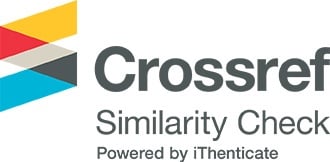Chiết xuất và tối ưu hóa hoạt tính chống oxy hóa của cao chiết lá Đinh lăng (Polyscias fruticosa (L.) Harms) với sự hỗ trợ của vi sóng
Các tác giả
DOI: https://doi.org/10.59294/HIUJS.26.2023.531Từ khóa:
Polyscias fruticosa, hàm lượng phenolic, hàm lượng flavonoid, chống oxy hóa, vi sóngTóm tắt
Polyscias fruticosa (L.) Harms thuộc họ Araliaceae và được sử dụng làm dược liệu với hoạt tính dược lý đa dạng như chống trầm cảm, chống căng thẳng, cải thiện trí nhớ, chống oxy hóa, hạ đường huyết, bảo vệ gan, hạ lipid máu, kháng nấm và kháng khuẩn. Ngoài ra, lá Polyscias fruticosa còn chứa nhiều các hoạt chất như phenolic, flavonoid, diệp lục,... có hoạt tính chống oxy hóa tốt. Nghiên cứu này khảo sát hàm lượng phenolic tổng (TPC), hàm lượng flavonoid tổng (TFC) và hoạt tính chống oxy hóa in vitro của cao chiết từ lá Đinh lăng bằng phương pháp hỗ trợ vi sóng. Kết quả cho thấy quá trình chiết sử dụng dung môi ethanol 90%, tỷ lệ nguyên liệu/dung môi 1:20 (wt/v), công suất vi sóng 200 W, thời gian chiết 15 phút bằng phương pháp hỗ trợ vi sóng đã cải thiện đáng kể hiệu suất chiết (33.50%), TPC (60.91 mg GAE/100 mg), TFC (62.88 mg QE/g) và hoạt tính chống oxy hóa (IC50 DPPH = 20.38 µg/mL và IC50 ABTS = 12.60 µg/mL) so với phương pháp thông thường. Do đó, cao chiết tối ưu này thể hiện dược tính tiềm năng để phát triển dược liệu có hoạt tính chống oxy hóa trong tương lai.
Abstract
Polyscias fruticosa (L.) Harms belongs to the Araliaceae family and are used as a medicinal plant with diverse pharmacological effects such as antidepressant, antistress, improved memory, antioxidant, hypoglycemic, hepatoprotective, hypolipidemic, antifungal, and antibacterial activities. Besides, Polyscias fruticosa (L.) leaves contain significant bioactive compounds like phenolics, flavonoids, chlorophylls, etc. with high antioxidant activity. This study investigated total phenolic content (TPC), total flavonoid content (TFC), and in vitro antioxidant activity of extract from Polyscias fruticosa leaves by microwave-assisted method. The results showed that extraction using ethanol 90% solvent, ratio of material/solvent of 1:20 (wt/v), microwave power of 200 W, and extraction time of 15 min with the microwave-assisted method significantly improved the extraction yield (33.50%), TPC (60.91 mg GAE/100 mg), TFC (62.88 mg QE/g), and antioxidant activity (IC50 DPPH = 20.38 µg/mL and IC50 ABTS = 12.60 µg/mL) compared to conventional method. Therefore, this optimal extract exhibited potential medicinal properties for the development of medicinal herbs with antioxidant activity in the future.
Tài liệu tham khảo
[1] Bộ Y tế Việt Nam, “Dược điển Việt Nam V,” Nhà xuất bản Y học - Hà Nội, tr. 1168-1169, 2018.
[2] L. H. Trieu, G. T. Tra My, D. N. Nhu Quynh, V. H. Thuy, L. V. Minh and N. T. Thu Huong, “Antioxidant activity of Polyscias fruticosa roots, leaves and their combination,” J. Med. Mater., vol. 26, pp. 186-192, 2021.
[3] A. Boye, D. O. Acheampong, V. Y. A. Barku, A. Yussam and E. A. Asiamah, “Follicular development and post-implantation loss assessments in nonpregnant and pregnant rats orally exposed to Polyscias fruticosa leaf extract,” J. Compl. Med. Res., vol. 8, pp. 1-10, 2018.
DOI: https://doi.org/10.5455/jcmr.20180210021526[4] M. T. Nguyen and L.S. Hoang, “Effect of storage temperature and preservatives on the stability and quality of Polyscias fruticosa (L.) Harms herbal health drinks,” J. Pharma. Res. Inter., vol. 26, pp. 1-7, 2019.
DOI: https://doi.org/10.9734/jpri/2019/v26i230133[5] Trần Hùng, “Phương pháp nghiên cứu dược liệu,” Bộ môn Dược liệu - Khoa Dược: Trường Đại học Y Dược TP. Hồ Chí Minh, tr. 25-49, 2014.
[6] K. Slinkard and V. L. Singleton, “Total phenol analysis: automation and comparison with manual methods,” American Enol. Viticul., vol. 28, no. 1, pp. 49-55, 1977.
DOI: https://doi.org/10.5344/ajev.1974.28.1.49[7] R. Baharfar, R. Azimi and M. Mohseni, “Antioxidant and antibacterial activity of flavonoid-, polyphenol- and anthocyanin-rich extracts from Thymus kotschyanus boiss & hohen aerial parts,” J. Food Sci. Technol., vol. 52, pp. 6777-6783, 2015.
DOI: https://doi.org/10.1007/s13197-015-1752-0[8] N. Q. Nguyen, M. T. Nguyen, V. T. Nguyen, V. M. Le, L. H. Trieu, X. T. Le, T.V. Khang, N. T. L. Giang, N. Q. Thach and T. T. Hung, “The effects of different extraction conditions on the polyphenol, flavonoids components and antioxidant activity of Polyscias fruticosa roots,” Mater. Sci. Eng., vol. 736, pp. 1-8, 2020.
DOI: https://doi.org/10.1088/1757-899X/736/2/022067[9] Nguyễn Thị Thu Hương và Nguyễn Thị Ánh Như, “Nghiên cứu tác dụng bảo vệ gan của Đinh lăng dựa trên cơ chế tác dụng chống oxy hoá,” Tạp chí Dược liệu, tập 9, số 3, tr. 85-89, 2004.
[10] M. M. Mutungi, F. W. Muema, F. Kimutai, Y. B. Xu, H. Zhang, G. L. Chen and M. Q. Guo, “Antioxidant and antiproliferative potentials of Ficus glumosa and its bioactive polyphenol metabolites,” Pharmaceuticals (Basel), vol. 14, p. 266, 2021.
DOI: https://doi.org/10.3390/ph14030266Tải xuống
Tải xuống: 1019











